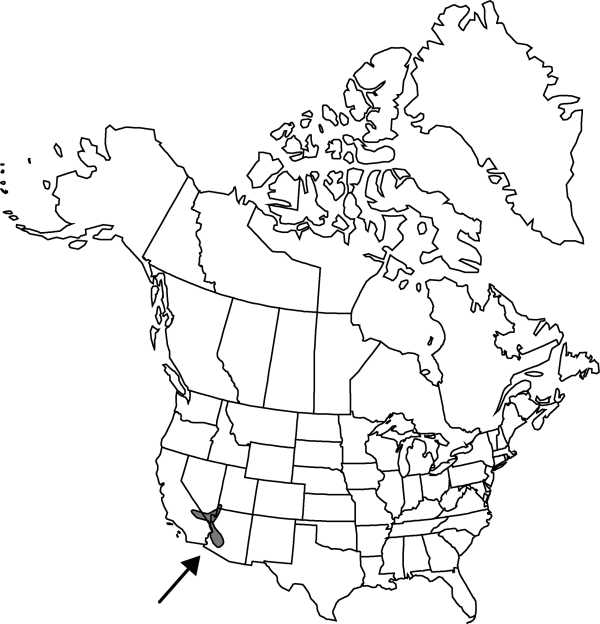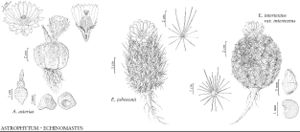Echinomastus johnsonii
Calif. Cact., 75. 1935.
Stems 10–25 × 7–15 cm; ribs (13–)18–21; areoles (14–)21–26 mm apart along ribs; areolar glands present at least seasonally. Spines 13–24 per areole, pale yellow to grayish lavender to maroon; radial spines 9–16 per areole; abaxial (shortest) radial spine 6–19 × (0.2–)0.4–0.6 mm; adaxial and lateral (longest) radial spines ca. 27–40 mm; central spines 4–9 per areole, present at all ages, 27–41 × (0.7–)1.1–1.4 mm; longest central spine straight to strongly decurved; abaxial central spine porrect, ca. 27–40 mm Flowers 4–6.5 × 4–7.7 cm; inner tepals yellow or pink to magenta, basal portions blotched with maroon, 2.5–3.7 × 1–1.8 cm; stigma lobes yellowish white to green. Fruits dehiscent only along single, longitudinal split, ± spheric, 17–18 mm. 2n = 22.
Phenology: Flowering (Feb-)Mar–May; fruiting Apr–Jun.
Habitat: Mojave desert scrub and upper edge of Sonoran desert scrub, rocky slopes, gravelly hills
Elevation: 500-1400 m
Distribution

Ariz., Calif., Nev., Utah.
Discussion
Echinomastus johnsonii varies geographically in both flower and spine color. The yellow-flowered plants have been named E. johnsonii var. lutescens. The pink-flowered plants occur in separate populations, as far as is known, to the north of the yellow-flowered plants, but the interface between the two forms is poorly understood.
Selected References
None.
